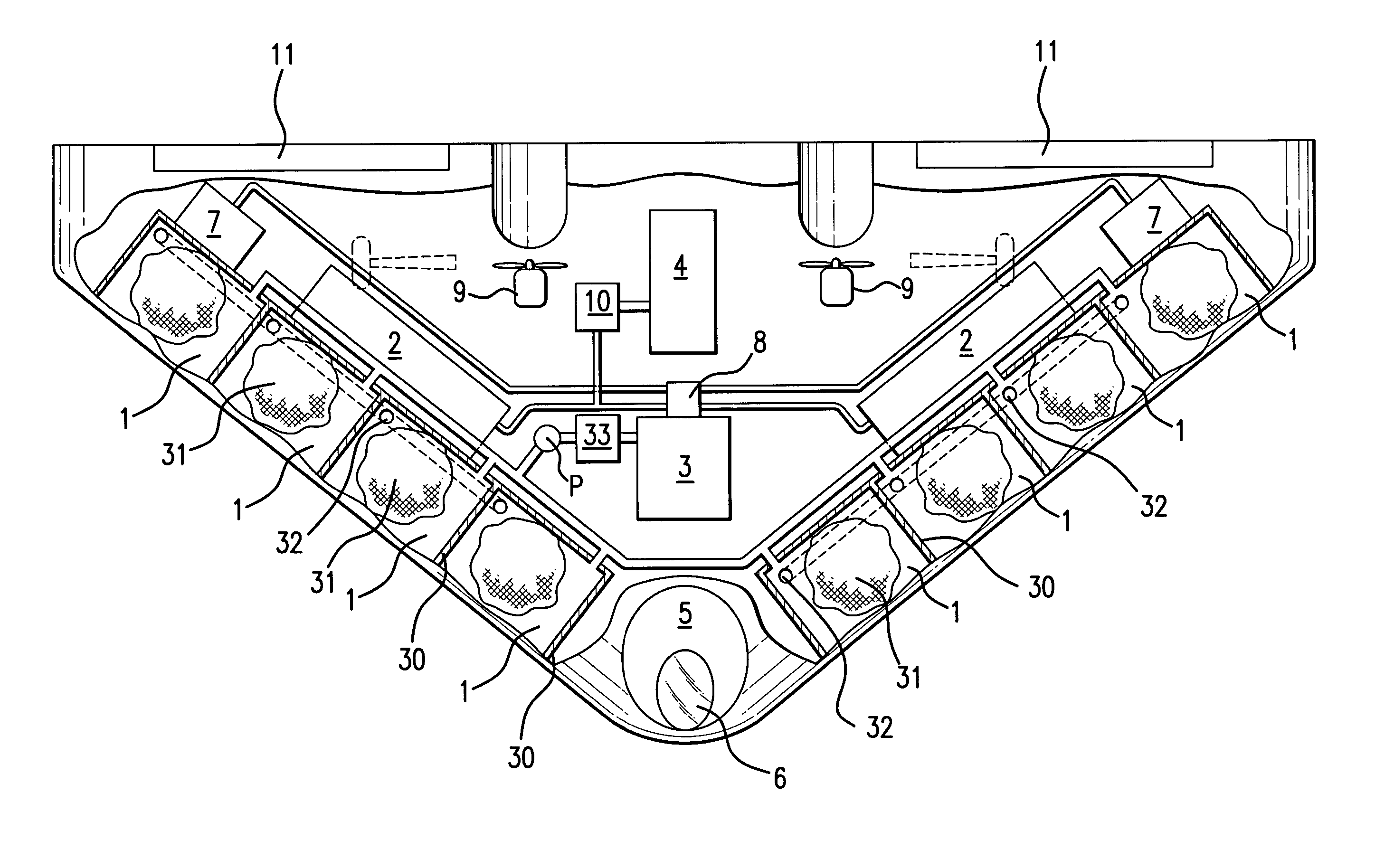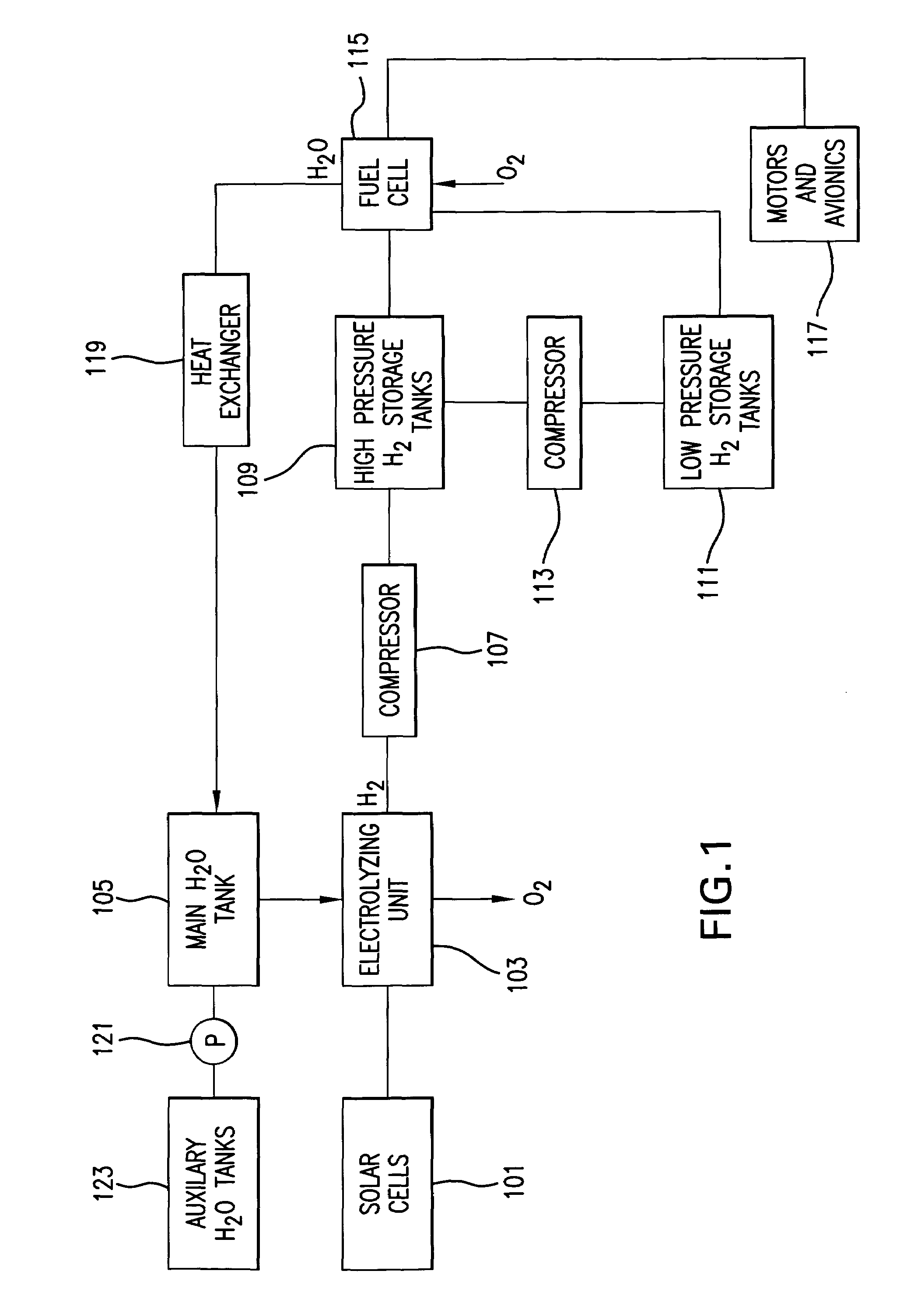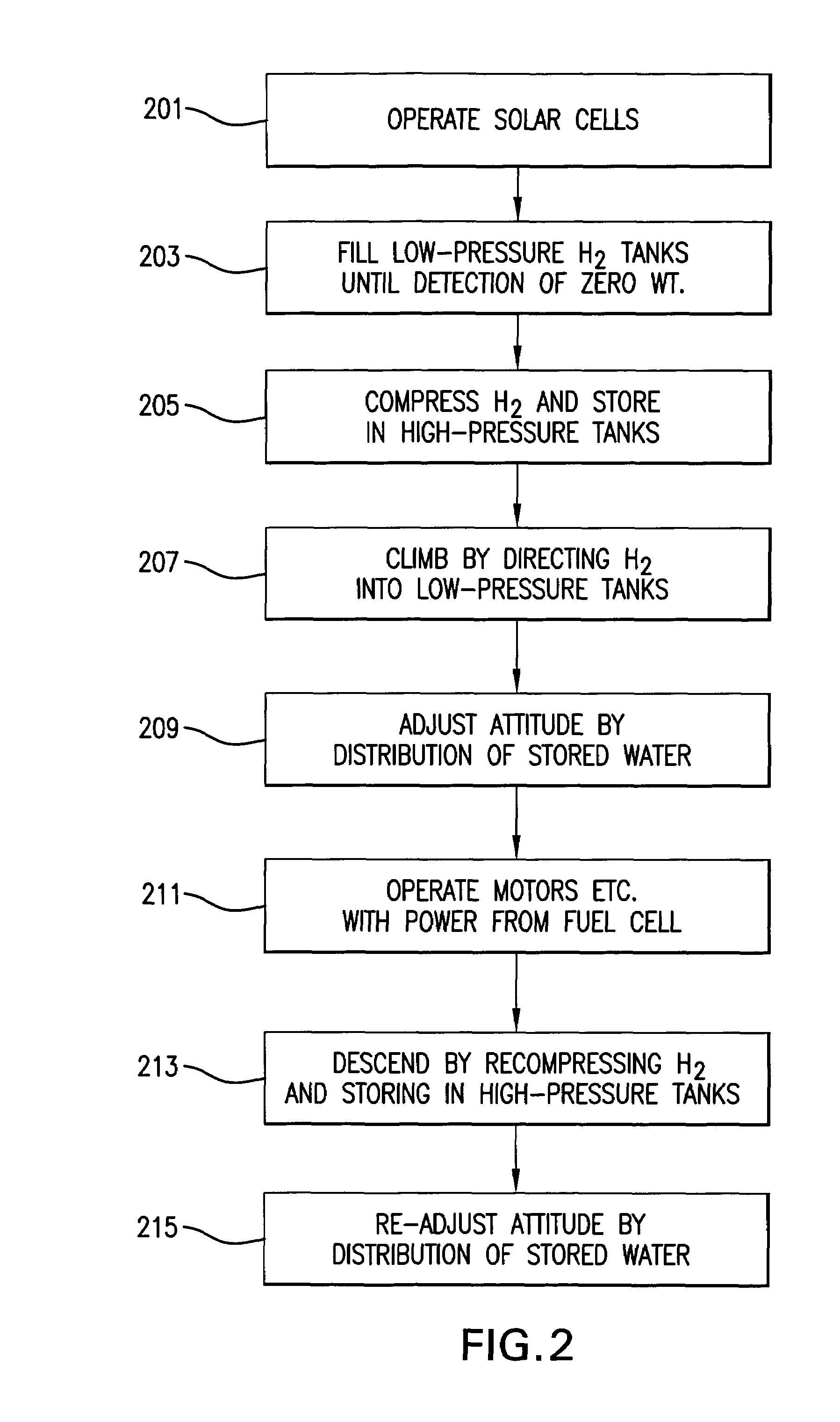Solar-powered aircraft
a solar energy and aircraft technology, applied in the field of aviation, can solve the problems of limited time an aircraft can remain aloft, limited fuel supply, and light-than-air aircraft still cannot remain aloft indefinitely, and achieve the effect of convenient us
- Summary
- Abstract
- Description
- Claims
- Application Information
AI Technical Summary
Benefits of technology
Problems solved by technology
Method used
Image
Examples
Embodiment Construction
[0023]The present invention is a solar-powered aircraft which is heavier than air at certain times, and which is lighter than air at other times. The operation of the aircraft comprises a closed-loop cycle as explained below.
[0024]Solar electric cells on the upper surfaces of the wings and / or fuselage provide electric power to separate on-board water, by electrolysis, into hydrogen and oxygen. The oxygen is largely discarded overboard, while the hydrogen is stored in the aircraft, either in low-pressure tanks formed between wing spars, or in auxiliary high-pressure tanks, or both. The pressurization of the wing spars with hydrogen contributes to structural integrity of the aircraft, as well as providing a means for storage of hydrogen.
[0025]The hydrogen serves as a lifting medium for the aircraft, allowing the aircraft to ascend as a lighter-than-air vehicle.
[0026]Some of the stored hydrogen is combined with oxygen (taken from the surrounding environment) in a fuel cell, to produce ...
PUM
 Login to View More
Login to View More Abstract
Description
Claims
Application Information
 Login to View More
Login to View More - R&D
- Intellectual Property
- Life Sciences
- Materials
- Tech Scout
- Unparalleled Data Quality
- Higher Quality Content
- 60% Fewer Hallucinations
Browse by: Latest US Patents, China's latest patents, Technical Efficacy Thesaurus, Application Domain, Technology Topic, Popular Technical Reports.
© 2025 PatSnap. All rights reserved.Legal|Privacy policy|Modern Slavery Act Transparency Statement|Sitemap|About US| Contact US: help@patsnap.com



